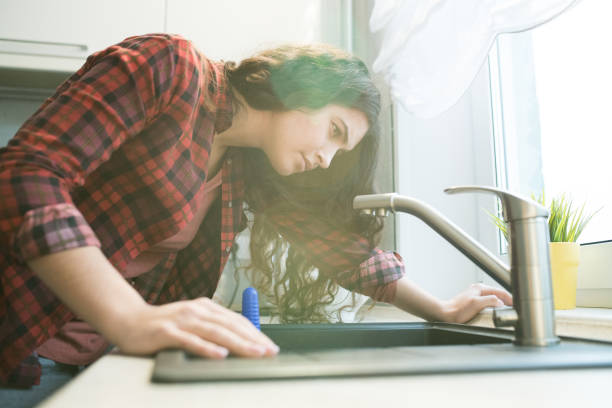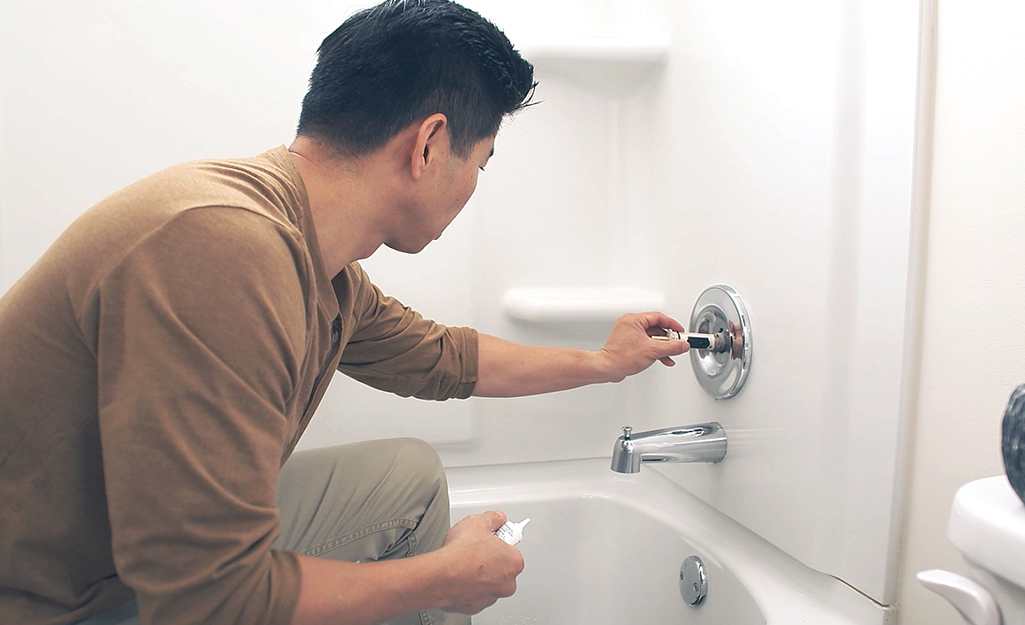When It's Important to Resolve a Malfunctioning Faucet
When It's Important to Resolve a Malfunctioning Faucet
Blog Article
This great article underneath about Why It's Important to Fix Leaky Faucets is immensely interesting. You should look it over.

Leaking taps might appear like a small hassle, however their influence goes beyond just the aggravation of the noise. From drainage to incurring unnecessary monetary expenses and wellness threats, ignoring a dripping faucet can result in different repercussions. In this write-up, we'll look into why it's critical to address this common home issue quickly and efficiently.
Wastage of Water
Environmental Impact
Trickling taps add substantially to water waste. According to the Epa (EPA), a single tap trickling at one drip per secondly can squander more than 3,000 gallons of water annually. This not only pressures water resources but additionally impacts ecosystems and wild animals based on them.
Financial Costs
Boosted Water Bills
Past the environmental influence, dripping taps can inflate water costs substantially. The gathered waste with time equates into higher energy expenses, which might have been stayed clear of with timely repair services.
Potential Residential Property Damages
Furthermore, extended trickling can result in damage to components and surface areas bordering the faucet. Water accumulation can trigger discoloration, deterioration, and also architectural concerns if left unattended, resulting in additional repair work prices.
Wellness Problems
Mold And Mildew and Mold Development
The consistent visibility of dampness from a leaking faucet produces an optimal atmosphere for mold and mildew development. These fungis not only compromise interior air top quality however likewise position health threats, especially for individuals with respiratory problems or allergies.
Waterborne Conditions
Stationary water in dripping taps can end up being a breeding place for microorganisms and other virus, enhancing the threat of waterborne illness. Contaminants such as Legionella germs thrive in stationary water, potentially bring about major ailments when ingested or breathed in.
Do it yourself vs. Professional Repair service
Pros and Cons of DIY Fixing
While some may attempt to take care of a dripping faucet themselves, do it yourself fixings come with their own set of difficulties. Without correct expertise and devices, DIY attempts can intensify the problem or cause incomplete repair work, extending the issue.
Advantages of Hiring a Professional Plumber
Hiring a specialist plumber makes certain that the underlying reason for the trickling tap is attended to efficiently. Plumbing professionals have the know-how and devices to diagnose and repair faucet problems efficiently, conserving time and minimizing the danger of additional damage.
Step-by-Step Guide to Fixing a Dripping Faucet
Tools Required
Before trying to deal with a dripping tap, gather the needed tools, consisting of an adjustable wrench, screwdrivers, replacement components (such as washing machines or cartridges), and plumber's tape.
Usual Tap Issues and Their Solutions
Identify the type of faucet and the particular problem triggering the drip. Typical issues include worn-out washing machines, corroded valve seats, or malfunctioning O-rings. Describe supplier guidelines or online tutorials for step-by-step assistance on repairs.
Preventive Measures
Regular Upkeep Tips
To avoid leaking taps, do routine maintenance such as cleaning up aerators, checking for leakages, and changing damaged components immediately. In addition, take into consideration mounting water-saving tools or updating to a lot more effective fixtures.
Importance of Prompt Repairs
Addressing dripping taps as quickly as they're discovered avoids further water wastefulness and prospective damage, inevitably conserving both water and money in the future.
Effect On Property Value
Perception of Well-Maintained Building
Preserving a home in good condition, including attending to maintenance problems like trickling faucets, boosts its perceived worth and desirability among possible purchasers or tenants.
Influence on Resale Worth
Characteristics with properly maintained plumbing components, including faucets, command greater resale worths in the property market. Dealing with leaking taps can add to a favorable impact throughout property evaluations and settlements.
Environmental Obligation
Private Payment to Conservation
Taking obligation for taking care of leaking faucets aligns with broader efforts towards water preservation and ecological sustainability. Every individual's activities jointly make a substantial effect on protecting precious sources.
Lasting Living Practices
By prioritizing prompt fixings and embracing water-saving practices, individuals add to sustainable living practices that profit both present and future generations.
Conclusion
Resolving a leaking tap exceeds mere comfort; it's an important action toward preserving water, decreasing economic costs, and securing health and residential property. Whether via DIY repair services or specialist assistance, acting to deal with dripping faucets is a little yet impactful means to promote responsible stewardship of resources and add to a much healthier, extra sustainable future.
How to Fix a Dripping or Leaky Faucet
A leaking faucet is one of the most common problems that homeowners encounter, but it being commonplace doesn’t make it any less annoying. The constant drip drip drip of a leaking bathtub faucet, showerhead, or sink tap can disturb your home’s serenity. Left neglected, a dripping faucet can also result in higher water bills and discoloration or mold growth in your sink or plumbing fixtures.
Fortunately, you don’t have to be a trained plumber to know how to stop a dripping faucet. With some basic tools, replacement parts, and a little patience, leaky faucet repair is a breeze. In this article, we’ll explain what causes dripping faucets and how you can fix them.
What Causes a Leaking Faucet?
Kitchen and bathroom faucets come in all manner of designs, but most involve some combination of valves, O-rings, seals, and washers. The O-ring is usually the weakest link, but any one of these pieces can wear down over time. Heat, moisture, temperature fluctuations, minerals, mold, and movement can contribute to warping and corrosion, breaking the watertight seal. This just comes with the territory of being a homeowner. Everything is always subject to wear and tear, and some component parts of your appliances and fixtures need to be replaced on occasion. At least replacement O-rings are cheap!
More rarely, dripping faucets can be a symptom of excessively high water pressure. Were this the case in your home, you would probably notice that the leak is not isolated to one faucet. Water pressure issues are harder to resolve on your own. We recommend contacting a professional plumber if you suspect your water pressure is too high.
How to Fix a Dripping Faucet
Pipe wrench or monkey wrench Allen wrench set Screwdrivers Old towel or rag Shut off the water.
Before you do anything, you need to turn off the water to keep from drenching your kitchen or bathroom. You should find a valve under the sink and against the wall. Once you’ve turned this valve, try turning the faucet on to confirm that the water source has been cut off.
If you can’t locate your local valve for the faucet you’re working on, you can always shut off the water to the house at the main valve. Of course, this will prohibit anyone from using the sinks, showers, or toilets while you’re working on the faucet that’s giving you trouble.
Plug or block the drain.
You’ll be disassembling the faucet and removing some small bits of hardware. Plug the drain with a stopper or rag to avoid the possibility of a small screw falling into your P-trap.
Take apart the faucet assembly.
There are several varieties of kitchen and bathroom faucets, each with its own manner of assembly. For detailed instructions on how to disassemble your faucet, you can refer to the fixture’s manual or contact the manufacturer. If you know whether you have a ball, disc, cartridge, or compression faucet, you can find detailed schematics online.
In general, you need to begin by removing the faucet handles. You might notice a small screw that you’ll need to remove with a screwdriver or Allen wrench. If you don’t see any visible securing hardware, it’s likely hidden under a decorative cap that can be unscrewed or popped off with flathead screwdriver.
Remove each piece methodically, consulting a schematic when necessary. Take notes or arrange the pieces in such a way to make it easier to correctly reassemble the faucet later.
Remove the cartridge.
Once you’ve removed the handles and securing hardware, you should be able to remove the valve cartridge or stem. Some cartridges will slide right out. Other faucet models will require you to loosen a nut with a pipe wrench before you can remove the valve stem.
Examine the exposed hardware.
With the cartridge or stem removed, inspect the component parts. Check the rubber O-rings for wear and tear. Also examine the seat washer for corrosion or other damage. These pieces are usually the responsible parties for a dripping faucet, but it’s worth inspecting the other component parts while you have the faucet disassembled.
Find replacement parts.
Once you’ve identified which faucet component has failed, find an identical replacement. Your local hardware store should have O-rings, seat washers, and other standard components in stock. If you have a luxury or uncommon faucet, you may have to contact the manufacturer for a replacement part.
It’s a good idea to take your old parts with you to the hardware store so you can compare them with the store’s inventory and be sure you’re purchasing the correct replacement.
Reassemble the faucet.
With your new parts in hand, reconstruct the faucet and handles. Don’t be tempted to overtighten screws or nuts. You might think this could create a better seal, but it can instead damage or bend a delicate part of the assembly and create a new problem for you.
Turn on the water and test the faucet.
The only thing left to do is test your work. Unplug the sink, turn the water back on, and try the faucet. Congratulate yourself on a job well done!
https://www.libertyhomeguard.com/how-to-fix-a-dripping-or-leaky-faucet/

I have been very interested in Should I Repair or Replace a Leaky Faucet? and I'm hoping you enjoyed reading the entire entry. For those who enjoyed our blog post please be sure to share it. Thanks a lot for your time. Please visit our site back soon.
Report this page